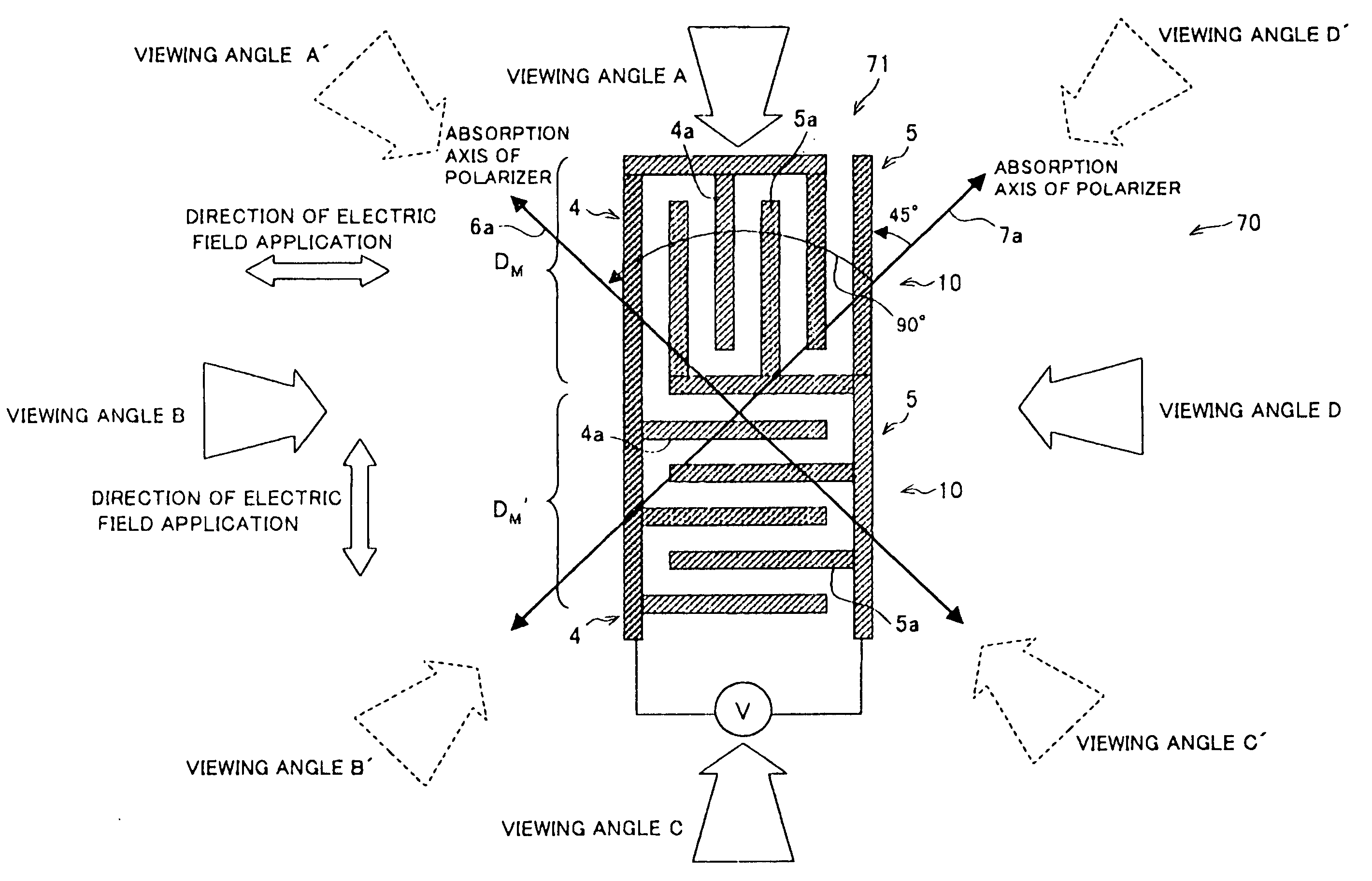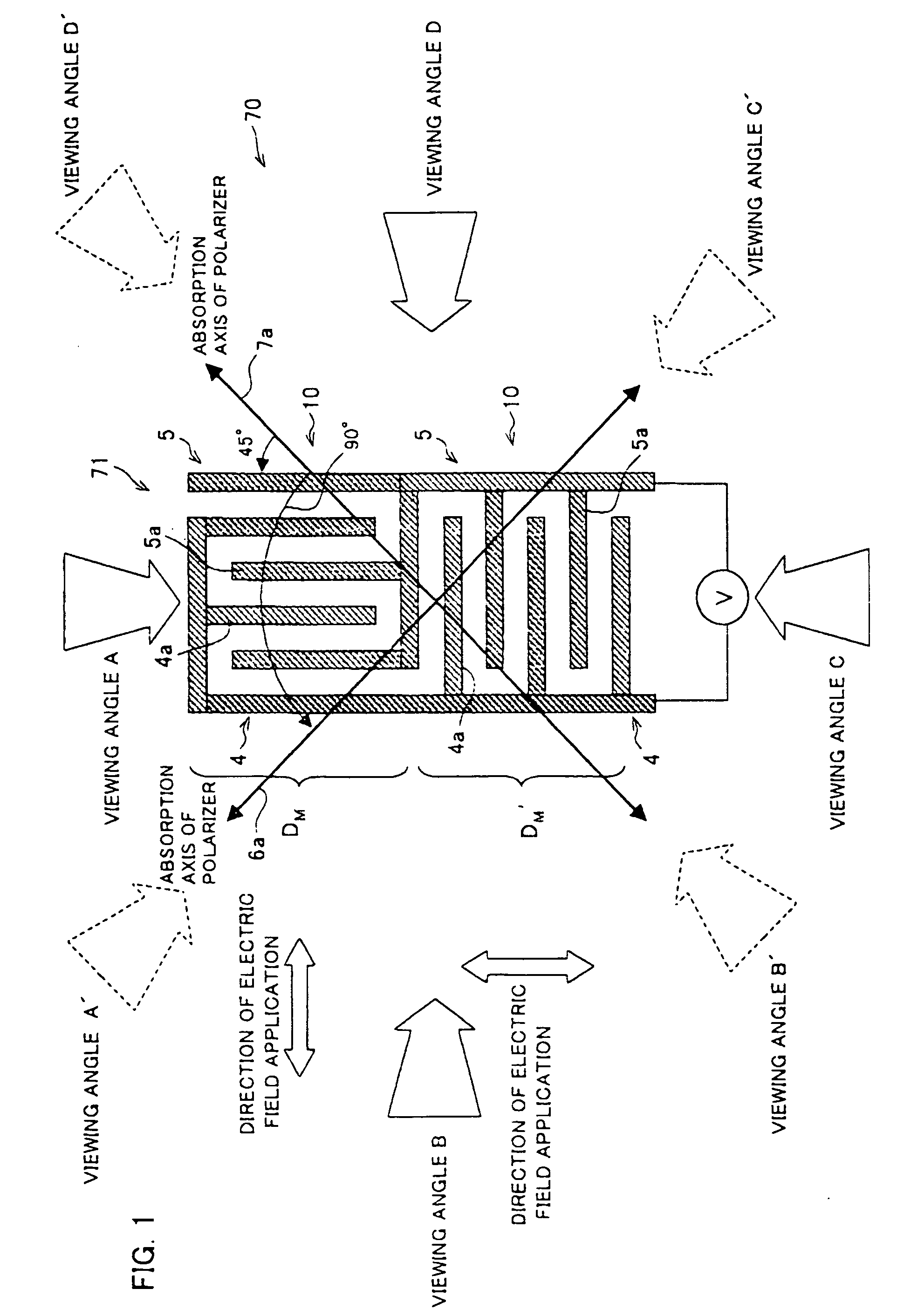Display element and display device
a display element and display device technology, applied in liquid crystal compositions, instruments, chemistry apparatus and processes, etc., can solve the problems of large hindrances to the tn mode, narrow viewing angle, slow response of liquid crystal display elements using the tn mode, etc., to improve the viewing angle property and improve the viewing angle.
- Summary
- Abstract
- Description
- Claims
- Application Information
AI Technical Summary
Benefits of technology
Problems solved by technology
Method used
Image
Examples
second embodiment
[0213] The following explains another embodiment of the present invention referring to FIGS. 13(a) and 13(b) to 15. Note that the present embodiment mainly discusses a difference between the present embodiment and the First embodiment, while the same constituent elements having the same functions as these in the first embodiment are labeled in the same manner and their explanation is omitted here.
[0214] In the First embodiment, the electric field is applied in the direction parallel to the surface of the substrates. The present embodiment, however, explains an example arrangement in which an electric field is applied along a normal direction of substrates.
[0215]FIG. 13(a) is a cross sectional view schematically illustrating essential parts of a display element according to the present embodiment when no electric field (voltage) is applied (OFF state), whereas FIG. 13(b) is a cross sectional view schematically illustrating the essential parts of the display element according to the...
third embodiment
[0231] Still another embodiment according to the present invention is explained below, referring to FIGS. 16 and 17. Note that the present embodiment mainly discusses a difference between the present embodiment and the First embodiment, while the same constituent elements having the same functions as these in the first embodiment are labeled in the same manner and their explanation is omitted here.
[0232]FIGS. 16 and 17 are plan views schematically illustrating an example of an electrode configuration for each pixel in the display element according to the present embodiment.
[0233] In the preset embodiment, the same display element configuration as in the first embodiment is adopted to form the switching element, signal lines, scanning line, and counter electrode lines, thereby forming a pixel array in matrix. More specifically, the present embodiment is arranged as follows: interleave electrodes 4 and 5 made of ITO are used whose line width is 5 μm and electrode-electrode distance ...
PUM
| Property | Measurement | Unit |
|---|---|---|
| polar angle | aaaaa | aaaaa |
| thickness | aaaaa | aaaaa |
| width | aaaaa | aaaaa |
Abstract
Description
Claims
Application Information
 Login to View More
Login to View More - R&D
- Intellectual Property
- Life Sciences
- Materials
- Tech Scout
- Unparalleled Data Quality
- Higher Quality Content
- 60% Fewer Hallucinations
Browse by: Latest US Patents, China's latest patents, Technical Efficacy Thesaurus, Application Domain, Technology Topic, Popular Technical Reports.
© 2025 PatSnap. All rights reserved.Legal|Privacy policy|Modern Slavery Act Transparency Statement|Sitemap|About US| Contact US: help@patsnap.com



